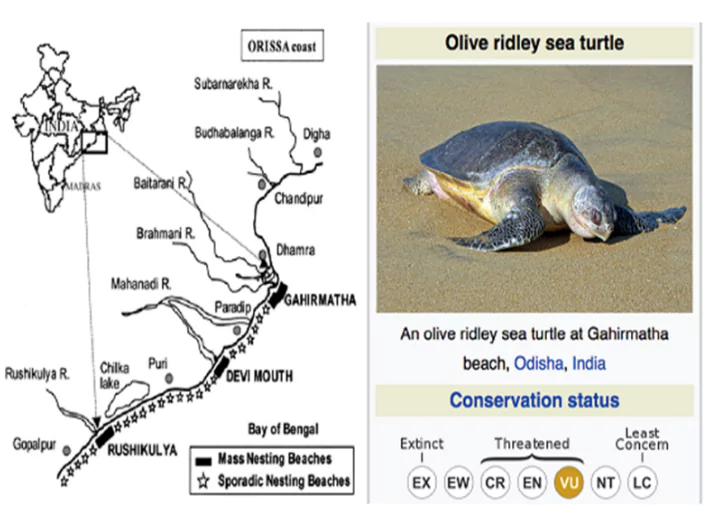![]() 22 Feb 2025
22 Feb 2025

Wildlife enthusiasts are thrilled as a record 6.5 lakh endangered Olive Ridley sea turtles have arrived at the Rushikulya beach in Odisha’s Ganjam district for mass nesting after a gap of two years.

| Leatherback Turtle | Loggerhead Turtle | Hawksbill Turtle | Green Turtle |
|
|
|
|
| Characteristics | Turtles
|
Tortoises
|
| Shells | They have thinner, more water-dynamic shells. | They have more rounded and domed shells. |
| Habitat | Turtles spend their life in water | Tortoises spend most of their time on land |
| Legs | They have flipper-like legs or webbed feet to make it easier to cruise through the water. | They have ‘club-like’ forelegs and ‘elephantine’ hind legs to help them move around and carry the extra weight. |
| Food | Generally omnivorous. They eat jellyfish, seaweed, and so forth. | Generally herbivorous. They eat grass and leafy vegetables. |
| Life Span | They usually have a life span of 20-40 years. | They usually have a life span of 80-150 years |
<div class="new-fform">
</div>